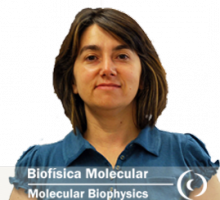. 39 (2000): 3899-3907.
The aerobic purification of Pseudomonas nautica 617 nitrous oxide reductase yielded two forms of the enzyme exhibiting different chromatographic behaviors. The protein contains six copper atoms per monomer, arranged in two centers named CUA and Cut. Cut could be neither oxidized nor further reduced under our experimental conditions, and exhibits a 4-line EPR spectrum (g(x)= 2.015, A(x) = 1.5 mT, g(y) = 2.071, A(y) = 2 mT, g(z) = 2.138, A(z) = 7 mT) and a strong absorption at similar to 640 nm. Cu-A can be stabilized in a reduced EPR-silent state and in an oxidized state with a typical 7-line EPR spectrum (g(x) g(y) = 2.021, A(x) = A(y) = 0 T, g(z) =0.178, A(z) = 4 mT) and absorption bands at 480, 540, and similar to 800 nm. The difference between the two purified forms of nitrous oxide reductase is interpreted as a difference in the oxidation state of the CuA center. In form A, CUA is predominantly oxidized (S = 1/2, Cu1.5+-Cu1.5+), while in form B it is mostly in the one-electron reduced state (S = 0, Cu1+-Cu1+). In both forms, Cu-Z remains reduced (S = 1/2). Complete crystallographic data at 2.4 Angstrom indicate that Cu-A is a binuclear site (similar to the site found in cytochrome c oxidase) and Cu-Z is a novel tetracopper cluster [Brown, K., et ai. (2000) Nat. Struct. Biol. (in press)]. The complete amino acid sequence of the enzyme was determined and comparisons made with sequences of other nitrous oxide reductases, emphasizing the coordination of the centers. A 10.3 kDa peptide copurified with both forms of nitrous oxide reductase shows strong homology with proteins of the heat-shock GroES chaperonin family.

 ]
]